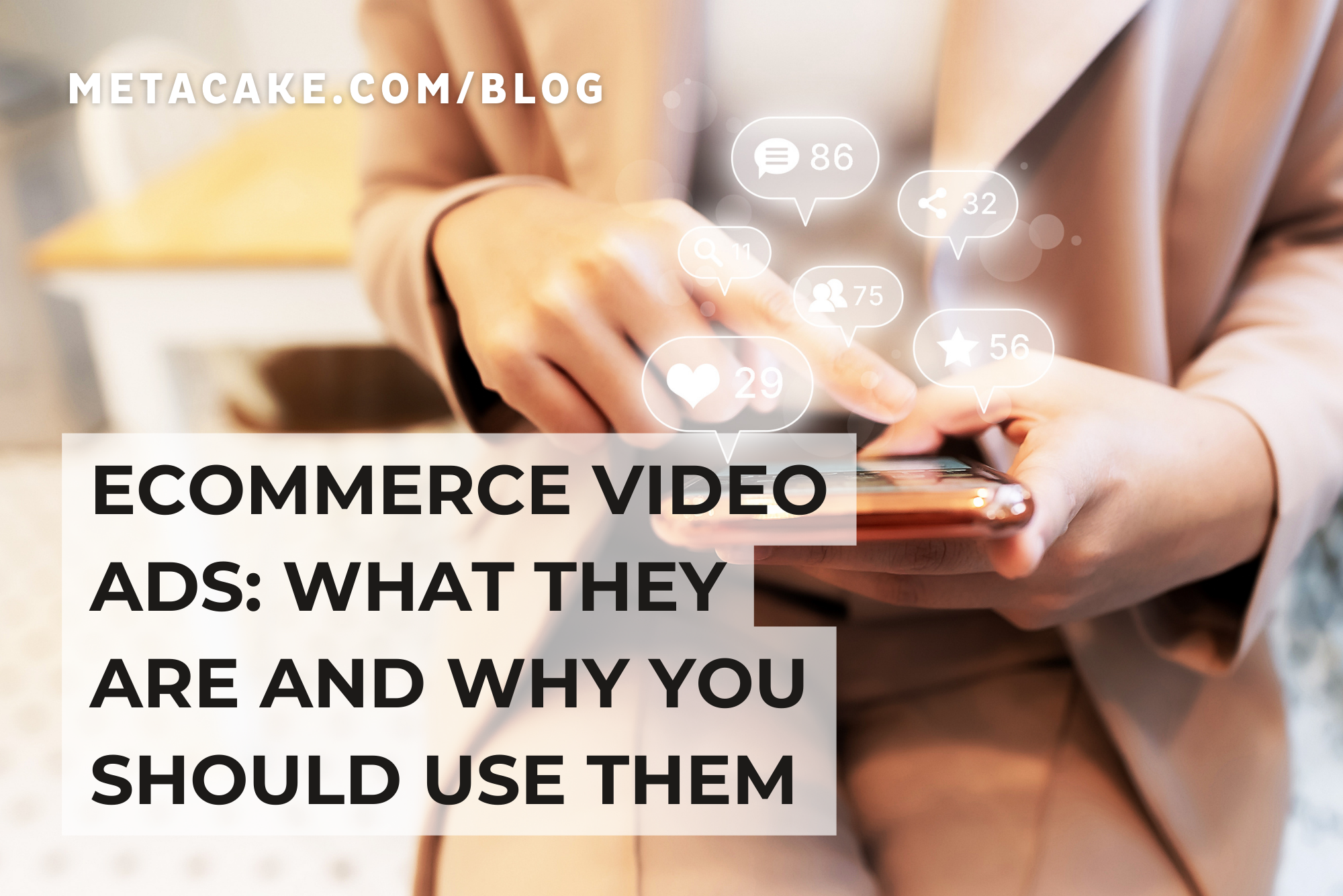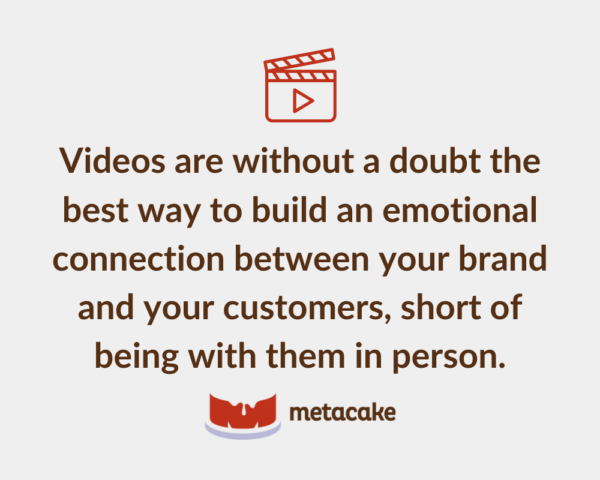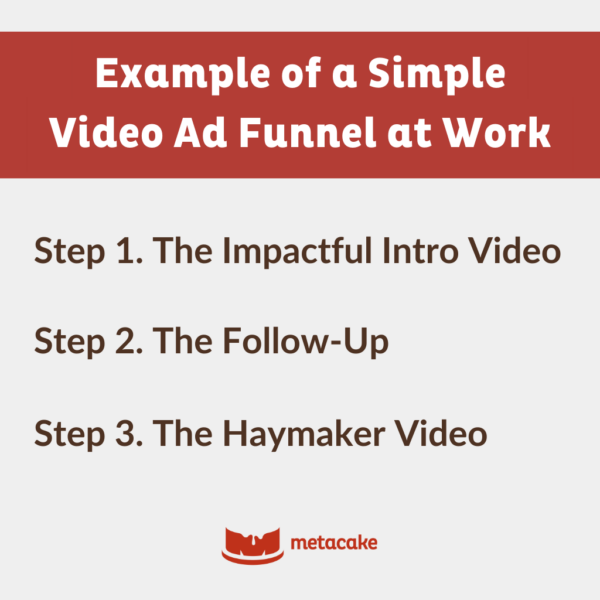
Ecommerce Video Ads: What They Are and Why You Should Use Them
Not too long ago, the only video content an ecommerce brand would ever dream of having was a beautiful brand video on their homepage. This info-packed, mildly emotional content would serve as a great intro to the brand.
While this form of video content may still be valuable for your website, there’s a better way to use your video resources for ecommerce marketing, and it’s actually a way that has results attached to it.
Video is incredibly powerful for communicating and selling, but how you create it and where it’s used need to go hand in hand. Getting this right will be the difference between making revenue off your video content or failing and losing a lot of cash.
This is why ecommerce video ads should become your best friend if you keep some key principles in mind.
What Are Ecommerce Video Ads?
Ecommerce video ads are short, engaging videos specifically designed for online businesses to promote their products or services.
These ads seek to attract the attention of potential customers, display the products in an enticing manner, and ultimately drive more sales on ecommerce platforms or websites.
They often include captivating visuals, compelling storytelling, and immersive experiences that highlight the brand and its offerings.
Creating an effective ecommerce video ad is both an art and a science. It requires a keen understanding of your target audience, the product or service you’re promoting, and the platforms where your ad will be displayed.
Let’s look at some key elements that make ecommerce video ads successful:
- Attention Grabbing: A compelling ecommerce video ad must grab attention within the first few seconds. Bright colors, captivating imagery, and high-quality production are essential.
- Storytelling: Effective ecommerce video ads tell a story. They create a narrative that resonates with your audience, stirring emotions and driving engagement.
- Call to Action (CTA): Every ecommerce video ad should include a clear and compelling call to action. For example: “Buy Now,” “Learn More,” or “Sign Up.” The CTA guides them toward the desired action.
- Mobile Optimization: With the rise of mobile shopping, ecommerce video ads must be optimized for viewing on smartphones and tablets. Ensure that the ad is visually appealing and functions seamlessly on smaller screens.
- Targeting: Effective targeting is essential for maximizing ecommerce video impact. Leverage the data on demographics, interests, and online behavior to deliver ads to the most relevant audience segments, thereby increasing the likelihood of conversion.
- Platform-Specific Adaptation: Video content standards and viewer preferences vary across platforms. Tailor your video ads accordingly, optimizing them for specific platforms such as Facebook, Instagram, YouTube, or TikTok.
- Testing and Optimization: Continuous testing and optimization are vital for maximizing the performance of ecommerce video ads. Experiment with different creative elements, targeting strategies, and ad formats to identify what resonates most with your audience and refine your approach accordingly.
Ultimately, ecommerce video ads have the power to captivate, persuade, and convert your viewers into customers.
By combining compelling visuals, storytelling, strategic targeting, and continuous optimization, you can create video ads that drive engagement, sales, and brand loyalty in today’s competitive online marketplace.
Why Use Ecommerce Video Ads?
Ecommerce video ads are a powerful tool that online businesses, in our opinion, should definitely utilize. Let’s look at some reasons why:
- Increase Engagement: Videos are exceptionally appealing and can better attract the attention of potential customers than text or graphics alone. With the rise of social media platforms, video sharing is all the rage! When viewers share your video, you increase your brand awareness and broaden your reach.
- Increase Your Conversion Rates: Watching a video about a product or service can greatly persuade customers to buy. In fact, over 89% of individuals claim that watching a video persuaded them to purchase a product or service.
- Gain Trust and Credibility: When potential customers see videos of actual people using your product or service, it creates an enjoyable brick-and-mortar store-like experience. You won’t find that in photos or text alone. Bonus points if you or other company owners are in these videos; it gives a more human feel to your strategy, letting your customers get a peek behind the curtain.
- Provide Guidance: With ecommerce video ads, you can easily demonstrate assembly and installation instructions. We’ve all struggled to assemble a product at least once in our lifetime. Having these clear instructions will make your customers’ lives much easier.
- Share Happy Customer Reviews: We all know the importance of good customer reviews. But did you know that 95% of customers will read an online review before buying a product? If you have happy customers who are eager to express their enthusiasm for your product, why not share that with new potential customers?
What Is an Ecommerce Video Ad Funnel?
If you’ve been around marketing people for a bit, you’ve surely heard of funnels, and we’ve written about using funnels in Facebook and other ad platforms.
An ecommerce video ad funnel is an integrated strategy that employs a sequence of videos and touchpoints to create a relationship with the customer and lead them to a purchase.
Ecommerce video ads attract attention, while ad funnels guide prospects to make a purchase. Video advertising can be part of an ad funnel, acting as a gateway for potential buyers.
Think of it like this: Ecommerce video ads are the hook that grabs attention, while ad funnels are the line that draws the potential customer toward making a purchase.
Like we said, they go hand in hand.
Why Attach a Funnel to Ecommerce Video Ads?
Videos are without a doubt the best way to build an emotional connection between your brand and your customers, short of being with them in person.
You can take your stand-alone videos and apply a funnel method to keep your video content as relevant as possible for viewers throughout the customer journey.
Carefully construct every video to do its job for each step, whether that’s introducing your product for the first time, answering frequently asked questions, sharing valuable content, or informing them of new products you just released.
Along the way, this facilitates a relationship with the customer and develops your brand while you sell. The end result? You gain more long-term customers!

Example of a Simple Video Ad Funnel at Work
Here’s a breakdown of a simple 3-step video ad strategy using examples from one of our clients, Groove Life Silicone Rings.
Step 1: The Impactful Intro Video
- Where: YouTube pre-roll ads.
- Goal: Capture viewer attention within the first 5 seconds.
- How: Create a 30– to 60–second engaging video showcasing your brand or product. Aim to make your brand memorable, encouraging viewers to look you up later.
Step 2: The Follow-Up
- Where: YouTube Remarketing Ads and Google Branded Search Ads.
- Goal: Drive viewers to visit your website.
- How: Utilize remarketing ads on YouTube and display network ads on Google to reintroduce your brand. Focus on being informative rather than sensational.
Step 3: The Haymaker Video
- Where: Facebook or YouTube Retargeting Ads.
- Goal: Encourage a purchase.
- How: Target users who’ve visited your site but haven’t made a purchase yet. Use a short, compelling video highlighting product features, addressing potential concerns, and creating urgency. Consider incorporating customer testimonials. Adding punchy captions can enhance the impact.
This strategy aims to move viewers from initial awareness to making a purchase, leveraging different types of video ads tailored to each stage of the customer journey.

Next Steps
We won’t get into advanced Facebook video funnels here, but there’s a lot you can do on Facebook based on how long the user has watched your video ad. For example, consider creating more custom retargeting audiences for those who watched 50% or more of your video but didn’t purchase.
If the user did purchase, this isn’t the end! In fact, it’s only the beginning of turning a customer into a raving fan!
Don’t start throwing more ads at the newly acquired customer, but retarget purchasers with more content that communicates the purpose and values behind your brand.
Utilize videos that tell your brand story, thank your customers for their business, feature how your company gives back to the community, or even offer a coupon for friends and family.
Final Advice
The biggest mistake you could make while building and testing your ecommerce video ads is giving up. The second biggest mistake would be to try and get each video perfect.
These are not normally high-production shoots. Some of the most effective video ads are shot and edited on your phone!
We mentioned the first five seconds are crucial for capturing your audience’s attention, so test, test, and then test some more. In fact, we encourage you to test dozens of variations of the first five seconds of each video to find what works best.
As you monitor these ads, watch for key metrics such as watch time, average watch time per impression, and video plays at 25%, 50%, 75%, and 100%.
These will inform your process of narrowing down which intros are capturing views and which aren’t!
While this is a lot of information to take in, we hope you find it beneficial. If you need additional assistance with your ecommerce video ad development, please get in touch. We’re always here to help!



